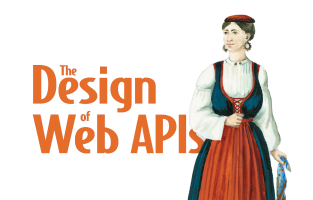
5 reasons why you should treat private APIs like public ones
By Arnaud Lauret, December 1, 2021
“Why should we care about our privates APIs? They’re only consumed by us, so let’s do minimal work on them. We’ll keep our effort only for the public ones we sell to the outside world.” Such stance will have terrible consequences for an organization, even more if it will never create public APIs. Let’s see 5 reasons why you should treat privates APIs like public ones.

Talking about The Design of Web APIs with Erik Wilde
By Erik Wilde & Arnaud Lauret, November 30, 2021
Had a great time chatting with Erik Wilde about the motivation for writing The Design of Web APIs book, and why it specifically focuses on the design aspect of the API lifecycle (and also why it is not titled The Implementation of Web APIs).

5 ways to update a boolean status with a REST API
By Arnaud Lauret, November 24, 2021
Last week, someone sent me a direct message on Twitter asking the following question: Let’s say you have a resource with an activated boolean property, how would you design the operation(s) allowing to activate or deactivate it? As this is a use case I often encounter during API design reviews or API design workshops, I thought it would be interesting to share my usual answer(s) with everyone.

Full Life Cycle API Management is not enough, let’s try 8K API Management
By Arnaud Lauret, November 17, 2021
You didn’t knew that API Management was old and you needed a “Full Life Cycle” API management solution to help you achieve your API strategy? Well, I didn’t. To be honest, though the term is quite old, I didn’t realized until recently that “Full Life Cycle API Management” started to replace simple “API Management”, at least in software vendor communications. But what if I tell you that this “Full Life Cycle” version is already dead? What if I tell you that you need 8K API Management?

We need to talk: OpenAPI 3 is 4 years old, but Swagger 2 is still predominant
By Arnaud Lauret, November 10, 2021
While quickly doing a first scan of latest Postman State of the API Report , I did my Spock face, raising an eyebrow. Indeed, I read that after JSON Schema, “The next most popular specifications were Swagger 2.0 (54%) and OpenAPI 3.0 (40%)”. To be honest and based on my own experience, it’s not totally surprising, I’m still hearing/reading “can you check that Swagger” everyday. But why the 4 years old OpenAPI 3 is still struggling to surpass the good old Swagger 2?

Choosing between birthDate and dateOfBirth has important implications for your API
By Arnaud Lauret, November 3, 2021
On LinkedIn, someone asked me what to choose between birthDate or dateOfBirth.
That looks like a very simple question, but it’s absolutely not.
Choosing between two names is the tree that hides the forest.
Besides having impacts on understandability, choosing a name can have impacts on naming patterns, data, or privacy which are quite important topics for APIs.

We are not Amazon or Github, but maybe we should ... or not
By Arnaud Lauret, October 27, 2021
One day I can say “Amazon did that, we should do it too” and may be quite displeased to hear “but, we’re not Amazon”. And the next one, I can be quite displeased to hear “Github did that, we should do it too” and respond “it’s not because Github did it, that we should do it too”. Why such inconsistency?

Anarchy in the resource path
By Arnaud Lauret, October 20, 2021
While doing API design reviews and API design training sessions, I often see resource paths designed in an anarchic way. By anarchic, I mean their various levels seem to have been chosen randomly or some of them seem at awkward places. But why should such paths should be considered wrong? Let’s see a few examples of how to not design resource paths to talk about it.

Excuse my French API, or being an English as a second language API designer
By Arnaud Lauret, October 13, 2021
This post is dedicated to all English as a Second, or Foreign, Language (ESL, EFL) API designers. Et tout spécialement mes compatriotes français! Designing APIs is already not that easy when you design them using your native language. But, it’s even more difficult when using a second one. So let’s see how to avoid design frenglish, itaglish or whateverglish APIs.

API Design Reviews Series - Part 3
We need specialized tools for API design reviews
By Arnaud Lauret, October 6, 2021
Doing an API design review is not only about that, but it will require, sooner or later, to analyze an interface contract. Use the wrong tools to do so, and reviews will become a terrible, never-ending burden. Use the right tools, and you’ll become a formidable machine, doing reviews at light speed, never missing the tiniest problem or question. But, after dozens of reviews, you may realize that, despite using the “right” existing tools, the API space actually lacks API design reviews specialized tools.
